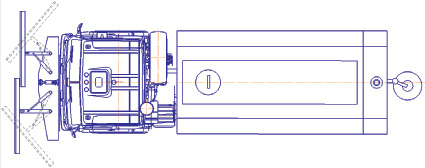Weatherproof Windows
페이지 정보

본문
One of the primary concerns in designing glazing systems for extreme natural disasters is ensuring impermeability and gas circulation. Heavy hail and strong storms can cause humidity to seep inside a building, leading to structural compromise. To address this issue, glass units can be designed with features such as double-glazed panes, which prevents water from entering the building.
Double-glazed panes involves fitting two panes of windows into a single glazing frame, with a gap between them. The gap is then filled with a non-conductive gas such as krypton, which helps to lower heat transfer and prevent humidity from entering the building. Additionally, the gap can be sealed using a desiccant or a desiccation unit to prevent humidity from entering the building.
For high-wind conditions, glazing systems can be designed with features such as strengthened frames, shatter-resistant glass and additional reinforcement at the bottom of the window. Reinforced glazing can be made using materials such as Fiberglass, which provide added strength in high gusts.
In regions with scorching heat, windows can be designed with features such as low-E coatings, which help to reduce heat gain and prevent sunlight from entering the building. Thermally insulated coatings are slim layers of compound that are applied to the glazing surface to prevent heat transfer. This feature can help to minimize the need for air conditioning, thereby saving energy and reducing costs.
For areas with ice, glazing systems can be designed with features such as thermal breaks, which help to prevent heat from escaping the building. Insulation involve using substances such as foam to separate the glazing from the frame, thereby preventing heat transfer. This feature can help to minimize heat escape and prevent the building from becoming cold.

In addition to these design features, windows can also be designed with additional features such as scrubresistant coatings, which help to reduce maintenance costs. Self-cleaning coatings involve using materials such as silane, which help to break down grime and waste on the glass surface, making it easier to clean.
In conclusion, designing glazing systems for extreme weather conditions requires careful consideration of various factors to ensure that the building remains safe and provides an optimal climate-controlled space. By incorporating design features such as sealed double glazing, reinforced frames, трос для манипулятора High-performance coatings, insulation, and scrubresistant coatings, architects and builders can create windows that meet the demands of extreme environmental challenges, while also providing optimal gas circulation and comfort.
- 이전글10 Things That Your Family Taught You About Auto Locksmiths Near Northampton 25.05.22
- 다음글A Provocative Rant About Car Locksmiths Northampton 25.05.22
댓글목록
등록된 댓글이 없습니다.